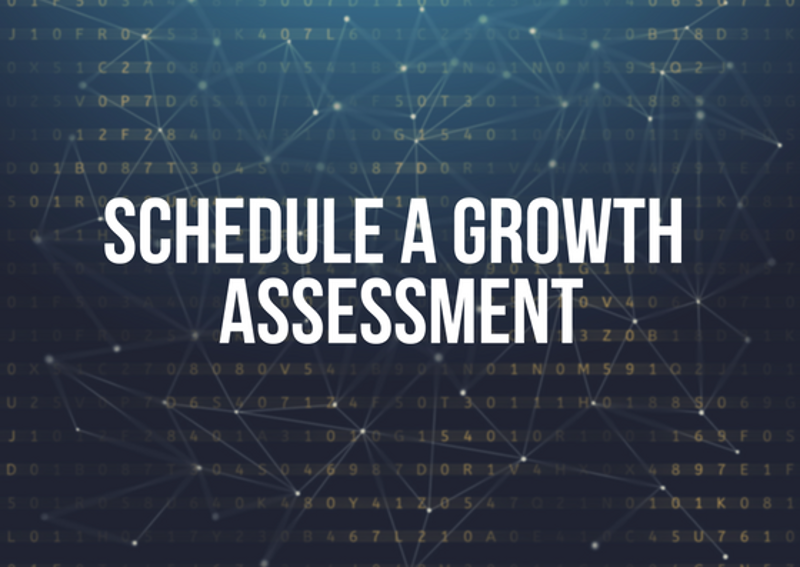Thinking about integrating Hubspot Marketing or Sales into your growth strategy and worried about what it's going to do to your B2B sales process?
Well... you ought to be.
In the early days of my agency, when we were all-in on inbound (vs growth), I engaged with a SaaS for turn-key inbound marketing services, and they wanted to start without the tools I recommended. In particular, they said "no" to Hubspot.
Initially, it felt like we were embarking on a process that felt a little like putting the cart before the horse, but that's okay, because we spent so much of our time working IN the program, it was a good opportunity to put some objectivity to our feelings about the platform.
What we discovered was amazing.
MORE LIKE THIS: A Sales Guy's Review of the Hubspot CRM
If you decide to go with Hubspot for your inbound marketing delivery, be prepared to dump your growth strategy on its head, because what you're about to experience is unlike anything you're doing today.
Seriously... and here are 6 major things that will transform overnight.
1. SEO will never be the same.
I don't know how you're currently handling SEO, but I've seen it done many ways...
We have clients who keep everything on WordPress, and use the Yoast plugin to track how well their SEO strategy applies to their blog posts or different web pages. These have to be the most strikingly aggravating environments for creating a keyword strategy, and something that really had me in shock when I saw how the "rest of the world" was doing it.
You have to deal with HOW MANY different website resources to just come up with your keyword list? Then you have to track them on a spreadsheet or some other resource, so you don't lose sight of them? Blech...
But it's not just about keywords - which we later realized when having to work through WordPress and Yoast... It was about all of those things we took for granted, like meta-tagging, and putting the little icons in the tabs at the top of the screen.

Moreover, it was about gauging how we actually ranked... how well our efforts were actually working - knowing which keywords were coming up in searches and which pages were responsible - AND where we fit in with our competitors. Seriously, in Hubspot we can actually see how we rank (see chart above).
How awesome is that? ... To be able to actually see where you stand against your competitors with the click of a button?
2. Social media management will pull a 180
Before converting to a full-scale inbound marketing agency, my Orange County, California-based firm, Orange Pegs Media, was operating almost exclusively with social media.
We had a number of different platforms that we used depending on the client, but they were all relatively comparable.
Moving into Hubspot wasn't a HUGE change, or at least we didn't think so at the beginning, but as we learned more about the tools, we were able streamline more and more of our processes, become more efficient, and more effective. Why? Because it was ALL right there... the monitoring streams, the campaign integration (so we could later track all of our marketing efforts based on campaign type), the follow-back functionality... posting, scheduling, favoriting, retweeting, searching.. ALL of it.
Where it REALLY shined for us was a month down the road when it came time to report our impact. Those analytics tools were Uh-mazing (more to come on this)!
3. Your Blog writing strategy will become unrecognizable
When you go through the Hubspot training for inbound marketing, one of the things we talk about is how to blog to get more visitors and moreover, how to turn those visitors into leads.
Right... the blog is not just about one, and it certainly isn't about something we can't measure, like "thought leadership" or "brand awareness." It's about attracting traffic and qualifying and converting it into leads.
Within the tool set, you'll have all the things you can do in WordPress, but you won't have to hunt down keywords to track for your SEO strategy. Instead, you simply type a few letters of the word(s) you want to use in the first box on the optimize tab, then watch all of the related keywords pop up for you to choose from, and go from there. OR, you simply type up a title with the keyword(s) you want to frame, and watch that one box populate automatically based on what it reconciles between your title and your tracking list.
You also have 3 basic formats to choose from, so you're not worried about how it should be structured. And you can watch the word count rise to the threshold you're looking for AS you type.
Yeah... it's in its own class.
4. You'll have to lose your precious spreadsheets
No doubt you already have a plethora of spreadsheets that you and your predecessors have compiled over the years, and it's likely you've invested dozens, if not hundreds, of hours in their development. They have to be readable AND serve a functional purpose, right? You also need to be able to sort and trim them, which has eaten up more time than you can count.
I'm sure you have one for all of your different logins... one for your SEO strategy... one for your blog topics... one for your social media monitoring... one for your contacts databases, which is probably split up by tabs for different behaviors that you monitor. - just to name a few...
Change is hard when you've invested so much, but these become completely unnecessary when your software does the work for you.
For my clients, we have one spreadsheet on Google docs where we track our projects and pull out keywords we want to focus on. That's it... one spreadsheet. One login.
5. You'll have to stop the analytics reconciliations
Wouldn't it be nice to be able to click on a lead, and without any additional effort, be able to see the first time they stepped foot on your website, where they came from, all of their activity while they were there, and what converted them into a lead - even if it took five months for them to finally submit a form?
Instead of explaining this one, let me SHOW you. Check out our download, "What an Inbound Lead Looks Like." It pretty much sums up all of the work you can STOP doing the minute you pull in the Hubspot platform.
6. All of that knowledge about plugins will become obsolete
You know that plugin you have for your forms? Yep, gone. What about that one for Calls-to-action? Yep, "poof." How about Yoast, so you can analyze keywords and develop meta descriptions or put your icon in the top tab, or your other SEO subscriptions, like MOZ? You got it... Gone like the wind.
What about all that time you spend fixing problems that are created by updates to one of your other plugins? Never again!
Never, ever, ever, ever again.
It's not all it's cracked up to be - it's a whole lot more...
As much as I love some of the aspects that WordPress and other marketing platforms have to offer, I love delivering high-performance marketing without all that extra work and time even more.
Just understand that if you are considering making the switch to Hubspot and inbound marketing, that your existing strategy is going to go through the blender set on "liquify." It's a good change to make though, and quite possibly the most important thing you'll do for your marketing efforts.
As a business owner, you'll finally be able to see first-hand how your marketing objectives and investment align with your business goals. As a marketer, you'll be able to spend a lot more time on delivering results rather than trying to justify the investment the company makes in your department.
Thankfully for our client, it was always their intention to implement Hubspot as part of their program, but it created a little more than SOME extra work in the launch by putting the software implementation BEHIND it. And it certainly reaffirmed our belief in the system that we have grown so fond of.
Learn more with a free growth consultation:



